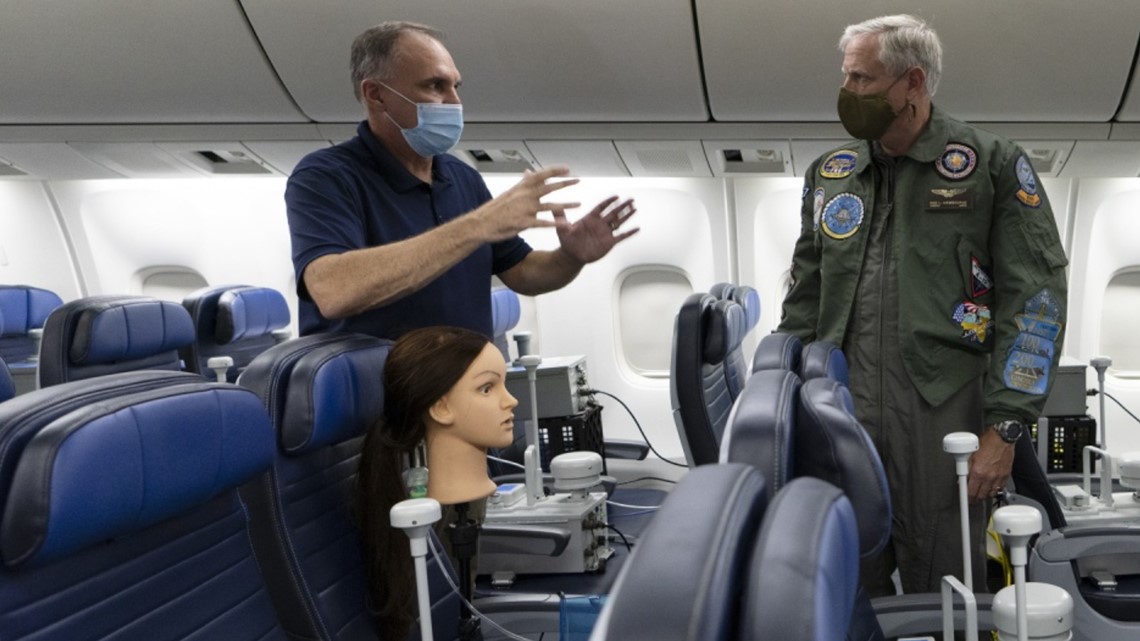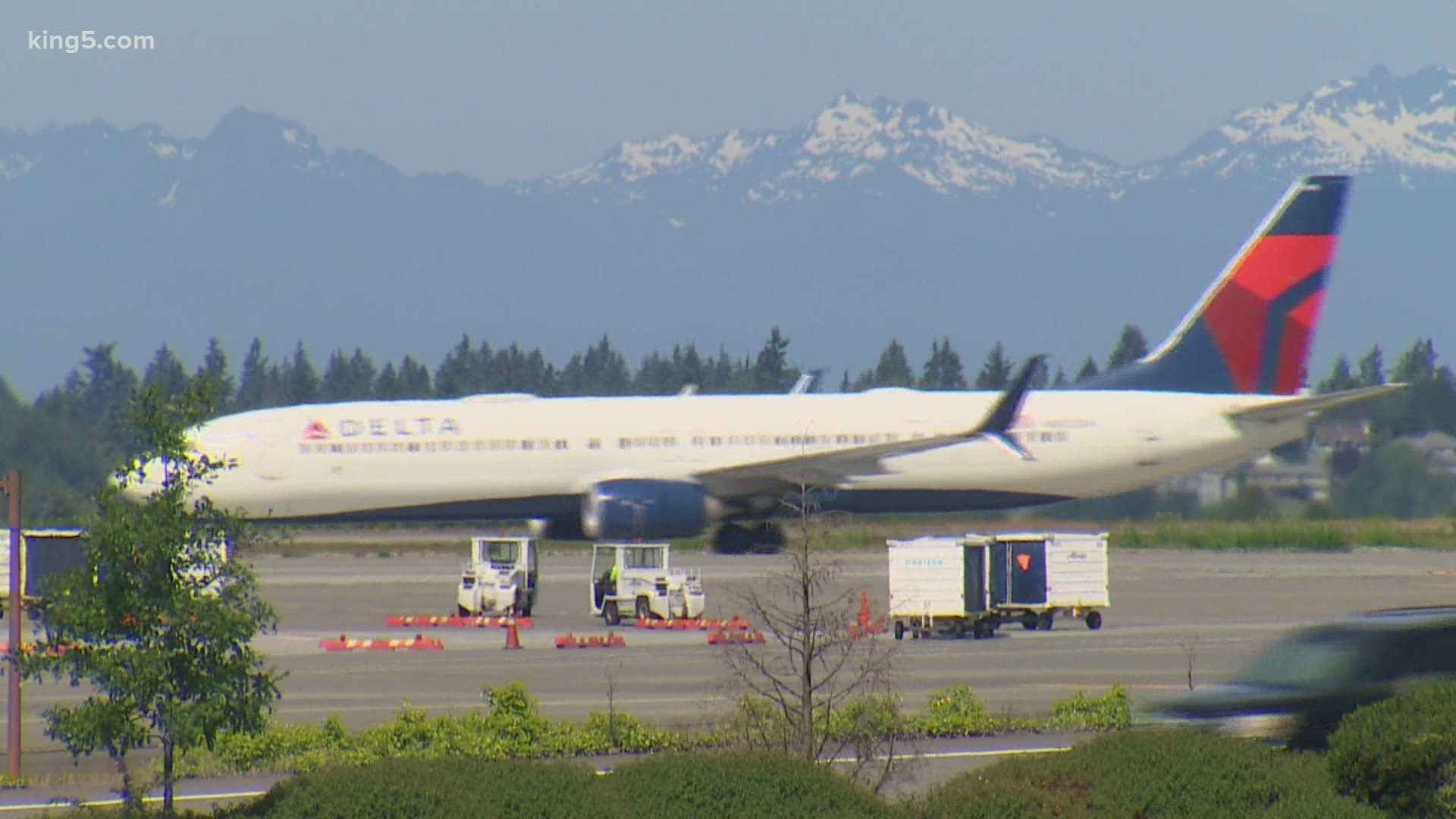In contrast to cruise ships, airliners have not proven to be hot beds for COVID-19 infections.
The International Air Transport Association (IATA) claims that just 44 people have become infected with COVID-19 while on board an airplane since the pandemic began hitting the industry in early 2020.
In its survey of potential passengers, people are split between thinking the air inside jets is as clean as a hospital, or dangerous. The biggest fear is sitting next to someone who’s coughing.
Boeing, Airbus and Brazil’s Embraer all made pitches to international media on what their research was finding that makes flying safer than what many people think. And the results between all three are comparable.
First, air entering the cabin comes from the top, flows down to the floor, and is sucked out through vents at your feet. They say that limits buoyancy of any droplets or aerosols that may contain the virus. Once that air is sucked in, it’s mixed with fresh air from outside the plane passing through a MERV 17 or higher filter, capable of capturing a virus particle the size of COVID. Air is fully replaced in the cabin every two to three minutes with warmed air from outside.
“Some droplets will still go through, and that will be stopped by the mask of the person who is breathing,” says Bruno Fargeon, Engineering Director for Airbus’ Keep Trust in Air Travel initiative. Fargeon, citing Airbus research, said that 10,000 particles were reduced to just five particles before a passenger could breath it in, even if somebody sitting next to you coughs.


While that is an astounding reduction, from 10,000 particles to just five in tests, it also shows why the manufacturers say masks are still important as a last line of defense, in what is a multi-layered approach to safety, and why the risk is not absolute zero.
Dr. David Powell, IATA’s medical advisor out of New Zealand, said if somebody coughed on you directly, that could be millions of particles.
All companies showed similar research. Embraer has a fuselage set up inside of a hangar to do testing, and research is continuing. Embraer displayed a photo of lasers inside that fuselage capable of measuring those particles.
“We do a simulated cough with particles and then have sensors on the airplane to measure the volume and location of where those particles go,” said Dan Freeman, Engineering Director for Boeing’s Confident Travel Initiative.
“And that testing has been really, really valuable in making sure the analysis that we’re doing is reflective of real life."
Boeing is also working with the Pentagon’s U.S. Transportation Command testing dummies aboard a 767 to also study the coughing risk, as the military flies thousands of personnel, including families, every year.
Freeman said a coughed particle will be removed from the cabin environment in around 90 seconds.
Boeing said it’s carrying out testing with planes full, or part full, both masks on and masks off. And what about the question of empty middle seats, that airlines including Alaska and Delta are promising? Even with a middle seat vacant, you’re not the recommended six feet away from the closest person to you.
But because of the top to bottom air flow, even sitting next to someone, you are effectively seven feet away says Airbus, much better off than being inside of a modern building, even with good ventilation.
“Put a mask on, get on an airplane,” said Luis Carlos Alfonso, Vice President of Engineering, Technology and Strategy at Embraer.
But passenger confidence isn’t the only headwind COVID-19 is presenting to the airlines. As people work from home and meet on Zoom calls, as conventions and weddings are cancelled or postponed, the coronavirus pandemic has quashed much of the demand to get on board and fly.

